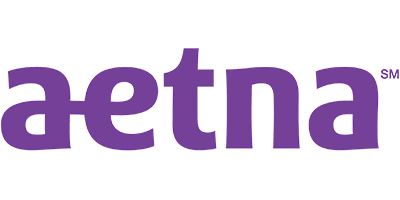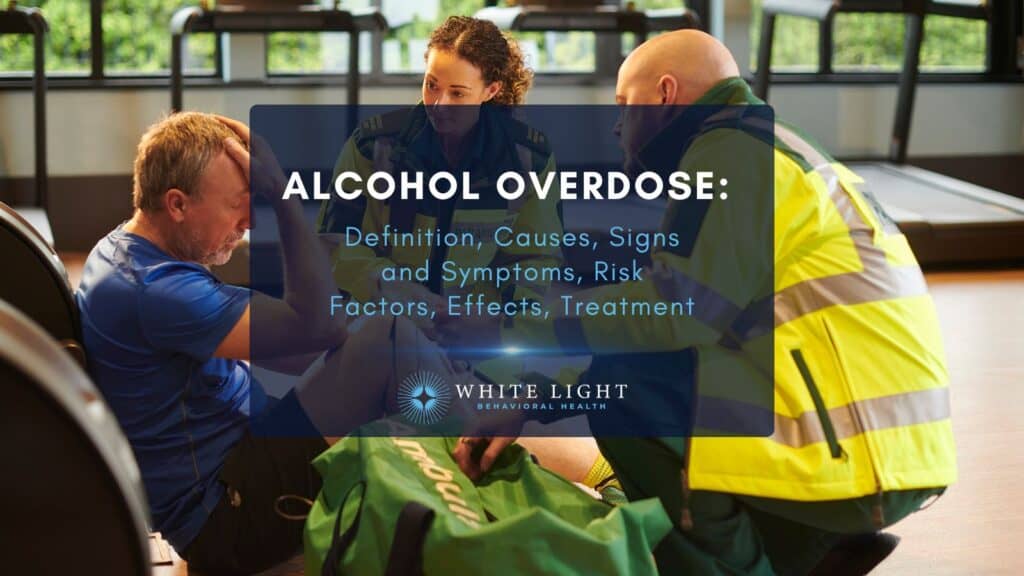Aetna in Ohio: Plan Types and Coverage for Drug Rehab and Mental Health

Aetna operates as one of 13 insurers offering ACA Marketplace plans in Ohio for 2025, competing directly with market leader Anthem which holds 31% market share and CareSource serving over 2.1 million Medicaid members (HealthInsurance.org, 2024). Ohio’s health insurance marketplace experienced record enrollment with 477,793 residents signing up for 2024 health plans, representing a 62% jump from 294,644 in 2023 (CMS, 2024). Under ACA essential health benefit requirements, Aetna’s Ohio plans must cover mental health and substance use disorder services as mandatory benefits, while Mental Health Parity and Addiction Equity Act compliance ensures no stricter cost-sharing or treatment limits on behavioral health benefits compared to medical/surgical benefits (CMS, 2023). This comprehensive analysis examines Aetna’s specific plan types including HMO and EPO options, coverage details for drug rehabilitation and mental health services, cost structures with deductibles averaging $1,735 for single coverage nationally, network adequacy for behavioral health providers, and practical enrollment guidance for Ohio residents seeking addiction treatment and psychiatric care through Aetna insurance plans (KFF, 2023).What Types of Aetna Health Plans Are Available in Ohio?
Aetna offers 3 primary health plan types in Ohio’s ACA Marketplace and individual insurance market: Health Maintenance Organizations (HMO), Exclusive Provider Organizations (EPO), and Preferred Provider Organizations (PPO) plans. The majority of Ohio’s individual market health plans are HMO or EPO types, meaning they provide no coverage for out-of-network non-emergency care (ODI, 2023). These restrictive plan structures significantly impact behavioral health access, as Ohio patients are up to 5× more likely to go out-of-network for mental health and addiction services compared to other medical needs (Community Solutions, 2019).
HMO plans require members to select primary care physicians and obtain referrals for specialist care within designated provider networks. EPO plans eliminate referral requirements but maintain strict network limitations, denying coverage for out-of-network providers except in emergencies. Only a minority of Ohio Marketplace plans are PPOs that provide partial out-of-network coverage, making in-network provider availability crucial for patients (ODI, 2023). National data demonstrate out-of-network use is 3.5× higher for mental health and substance use treatment than for medical surgical care, indicating persistent network gaps (NAMI/RTI, 2024).
Plan type selection directly affects mental health and addiction treatment access quality and costs. In-network reimbursement for mental health clinicians averages 22% lower than for other medical clinicians, disincentivizing providers from joining insurance networks (NAMI/RTI, 2024). Aetna health plan enrollees in Ohio face coverage limitations when seeking behavioral health providers, with roughly 478,000 Ohio Marketplace plan enrollees having mental health and substance use disorder coverage included in their benefits (CMS, 2024). Did you know most health insurance plans cover substance use disorder treatment? Check your coverage online now.Does Aetna Cover Mental Health and Substance Use Treatment in Ohio?
Yes. Aetna covers mental health and substance use disorder treatment in Ohio as one of ten essential health benefit categories mandated under the Affordable Care Act (CMS, 2023). The Mental Health Parity and Addiction Equity Act requires that insurance plans impose no stricter cost-sharing or treatment limits on behavioral health benefits compared to medical/surgical benefits (CMS, 2023). Aetna’s Ohio health plans must provide equivalent coverage for mental health services, substance abuse treatment, counseling, inpatient rehabilitation, and FDA-approved medications as part of basic coverage (HHS, 2022). Federal regulations ensure that Aetna cannot establish separate annual limits for behavioral health treatment or impose more restrictive authorization requirements than those applied to physical healthcare services.
Ohio faces significant parity enforcement challenges that affect all insurers operating in the state, including Aetna. The state received an “F” grade in national mental health parity performance assessments due to outdated parity statutes enacted in 2006 that haven’t aligned with federal MHPAEA standards (Ohio Senate, 2020). Ohio patients needing behavioral health services are up to 5× more likely to seek out-of-network care than patients with other medical needs (Community Solutions, 2019). In-network reimbursement for mental health clinicians averages 22% lower than for other medical clinicians, creating provider network gaps that force patients to seek higher-cost out-of-network treatment (NAMI/RTI, 2024).
Federal oversight has intensified to address persistent parity violations across the insurance industry. In March 2025, federal regulators proposed new rules to strengthen mental health parity enforcement, aiming to hold insurers accountable for unequal coverage practices (WHIO, 2025). Federal audits in 2022 found numerous parity violations by insurers nationwide, including more frequent denials for inpatient substance use disorder rehabilitation compared to medical hospital stays (DOL, 2022). The U.S. Department of Labor took action against health plans that failed parity compliance tests, pushing insurers to remove unequal treatment limitations and authorization barriers for behavioral health services.What Mental Health Services Must Aetna Cover?
Aetna must cover mental health and substance use disorder services as one of ten essential health benefit categories under the ACA, including outpatient therapy, inpatient psychiatric care, and prescription medications (CMS, 2023). The Mental Health Parity and Addiction Equity Act requires insurance plans impose no stricter cost-sharing or treatment limits on behavioral health benefits than on medical surgical benefits (CMS, 2023). Federal regulators proposed new parity enforcement rules in March 2025 to strengthen accountability and prevent insurers from maintaining unequal coverage practices (WHIO, 2025).
Behavioral health services accounted for 3.8% of all medical claim costs in 2023, more than double their 1.8% share in 2018 (PwC, 2023). Insurers paid an average of $122.79 per behavioral health claim in 2023, up from $106.84 in 2018 (PwC, 2023). Ohio health plans must eliminate separate annual limits for psychiatric treatment, ensuring mental health coverage mirrors medical coverage structures. Federal parity rules prohibit different copayment amounts for therapy sessions compared to primary care visits.
Federal audits in 2022 found numerous parity violations nationwide, including more frequent denials for inpatient substance use disorder rehabilitation than medical hospital stays (DOL, 2022). The Department of Labor took enforcement action against health plans that failed parity compliance tests, pushing insurers to remove unequal treatment limitations (DOL, 2022). Ohio patients needing behavioral health services have been up to 5 times more likely to seek out-of-network care than patients with other medical needs due to provider network gaps (Community Solutions, 2019).What Addiction Treatment Services Must Aetna Cover?
Aetna must cover counseling, inpatient rehabilitation, and FDA-approved medications as standard substance use disorder treatments under ACA benefit rules (CMS, 2023). The insurer provides coverage for all three FDA-approved medications for opioid use disorder including buprenorphine, methadone, and naltrexone as essential health benefits (ODM, 2021). Mental health parity enforcement requires Aetna to impose no stricter cost-sharing or treatment limits on addiction services than medical benefits (CMS, 2023). Substance use treatment services account for 3.8% of all medical claim costs in 2023, more than double their 1.8% share in 2018 (PwC, 2023).
Prior authorization barriers for medication-assisted treatment have been removed from Ohio Medicaid plans following federal mandates (ODM, 2020). Major commercial insurers including Aetna cover buprenorphine/naloxone therapy as standard benefits without dosage restrictions (ODI, 2023). Parity enforcement actions by the U.S. Department of Labor in 2022 pushed insurers to eliminate unequal treatment limitations for substance use disorder services (DOL, 2022). Federal regulators proposed new parity rules in March 2025 to strengthen accountability for equal coverage requirements (WHIO, 2025).
Addiction treatment coverage protects 478,000 Ohio Marketplace enrollees from catastrophic expenses through 2024 ACA plans (CMS, 2024). Behavioral health claims increased to $122.79 average payment per claim in 2023, up from $106.84 in 2018 (PwC, 2023). Emergency detox and addiction treatment situations receive protection from surprise billing through federal No Surprises Act provisions enacted in 2022 (CMS, 2022).How Much Do Aetna Plans Cost for Mental Health and Addiction Treatment?
Aetna plans in Ohio cost patients an average annual deductible of $1,735 for individual coverage, with many Marketplace plans requiring deductibles of several thousand dollars before mental health and addiction treatment benefits activate (KFF, 2023). The Affordable Care Act caps total annual out-of-pocket expenses at $9,450 for individual plans in 2024, protecting patients from catastrophic healthcare spending during extended behavioral health treatment (CMS, 2023). Aetna’s coverage includes all essential mental health and substance use disorder services under federal requirements, with parity protections ensuring that cost-sharing for behavioral health matches medical-surgical benefits (CMS, 2023). High-deductible health plans create significant affordability barriers for addiction treatment seekers, forcing many Ohio patients to delay care or seek out-of-network providers at higher costs.
Behavioral health claim costs have increased substantially, with insurers paying an average of $122.79 per behavioral health claim in 2023, up from approximately $106.84 in 2018 (PwC, 2023). Mental health and substance use services now account for 3.8% of all medical claim costs in 2023, more than double their 1.8% share in 2018 (PwC, 2023). Ohio patients needing behavioral health services are up to 5 times more likely to go out-of-network for care than patients with other medical needs, significantly increasing their out-of-pocket expenses beyond standard plan cost-sharing (Community Solutions, 2019). Aetna and other major Ohio insurers have removed prior authorization requirements for medication-assisted treatment for opioid use disorder, reducing administrative barriers but not eliminating deductible costs (ODM, 2020).What Are the Deductibles and Copayments for Behavioral Health Services?
Deductibles for behavioral health services under Aetna plans match medical/surgical benefit deductibles, with the average annual deductible reaching $1,735 for single coverage in 2023 (KFF, 2023). Copayments for mental health therapy sessions equal those charged for primary care visits under parity law requirements. The Mental Health Parity and Addiction Equity Act requires insurance plans impose no stricter cost-sharing limits on behavioral health benefits than on medical/surgical benefits (CMS, 2023). Behavioral health services now account for 3.8% of all medical claim costs in 2023, more than double their share of 1.8% in 2018 (PwC, 2023).
Copayment structures for substance use disorder treatment mirror those for equivalent medical services, with inpatient behavioral health copayments matching medical hospitalization costs. Prescription medication copayments for mental health drugs follow the same formulary tiers as other medications. Ohio’s Medicaid managed care plans cover behavioral health services equivalently to physical health care since 2018, extending parity protections to about 2.6 million Medicaid enrollees (Community Solutions, 2019). Insurers paid an average of $122.79 per behavioral health claim in 2023, up from $106.84 in 2018, reflecting increased utilization and inflation (PwC, 2023).
Annual out-of-pocket maximums cap total cost-sharing expenses at $9,450 for individual plans in 2024, protecting patients from catastrophic behavioral health expenses (CMS, 2023). Deductible applications for mental health services operate identically to medical services, with no separate or higher thresholds permitted. Federal audits in 2022 found numerous parity violations by insurers nationwide, including more frequent denials for inpatient substance use disorder rehabilitation than medical hospital stays (DOL, 2022). The U.S. Department of Labor pushed insurers to remove unequal treatment limitations affecting behavioral health cost-sharing structures (DOL, 2022). Contact us today to schedule an initial assessment or to learn more about our services. Whether you are seeking intensive outpatient care or simply need guidance on your mental health journey, we are here to help.Are There Network Limitations for Mental Health Providers?
Yes, network limitations for mental health providers create significant access barriers in Ohio. Ohio patients needing behavioral health services are up to 5× more likely to go out-of-network for care than patients with other medical needs (Community Solutions, 2019). In-network reimbursement for mental health clinicians averages 22% lower than for other medical clinicians, disincentivizing providers from joining insurance networks (NAMI/RTI, 2024). National data show out-of-network use is 3.5× higher for mental health and substance use treatment than for medical/surgical care, indicating persistent network gaps (NAMI/RTI, 2024).
Provider network adequacy challenges persist despite parity laws intended to equalize behavioral health access. Many Ohio residents are forced to seek higher-cost out-of-network providers for mental health and addiction care due to limited in-network options (NAMI/RTI, 2024). NAMI reports ongoing difficulties for Ohioans trying to find affordable in-network therapists and psychiatrists despite parity laws (NAMI, 2024). Federal audits in 2022 found numerous parity violations by insurers nationwide, such as more frequent denials for inpatient SUD rehab than for medical hospital stays (DOL, 2022). The majority of individual market health plans in Ohio are HMO or EPO type, meaning they offer no coverage for out-of-network non-emergency care (ODI, 2023).How Can I Find In-Network Mental Health Providers with Aetna?
To find in-network mental health providers with Aetna, access their online provider directory through your member portal or call customer service at the number on your member ID card. Verification of network status prevents surprise billing, since the majority of Ohio individual market health plans are HMO or EPO type, meaning they offer no coverage for out-of-network non-emergency care (ODI, 2023). Ohio patients needing behavioral health services have been up to 5× more likely to go out-of-network for care than patients with other medical needs (Community Solutions, 2019).
Confirming provider network participation becomes critical given that national data show out-of-network use is 3.5× higher for mental health and substance use treatment than for medical/surgical care, indicating persistent network gaps (NAMI/RTI, 2024). Only a minority of Ohio Marketplace plans are PPOs that provide partial out-of-network coverage, making in-network provider availability crucial for patients (ODI, 2023). NAMI reports ongoing difficulties for Ohioans trying to find affordable in-network therapists and psychiatrists despite parity laws (NAMI, 2024).
The federal No Surprises Act (2022) safeguards Ohioans from surprise bills by out-of-network providers in emergencies, including emergency detox or addiction treatment situations (CMS, 2022). Emergency behavioral health services receive protection under this federal legislation, preventing unexpected charges when patients require immediate care. Behavioral health services accounted for 3.8% of all medical claim costs in 2023, more than double their share from 2018, with insurers paying an average of $122.79 per behavioral health claim (PwC, 2023).What Happens If I Need Out-of-Network Treatment?
Out-of-network behavioral health treatment receives no coverage from HMO and EPO plans except during emergencies, according to Ohio Department of Insurance data (ODI, 2023). The majority of individual market health plans in Ohio are HMO or EPO type, severely restricting patient access to external providers (ODI, 2023). Only a minority of Ohio Marketplace plans are PPOs that provide partial out-of-network coverage, making in-network provider availability crucial for patients seeking mental health or addiction services (ODI, 2023). Ohio patients needing behavioral health services have been up to 5× more likely to go out-of-network for care than patients with other medical needs (Community Solutions, 2019).
PPO plan members face substantially higher costs when accessing out-of-network behavioral health providers. Out-of-network treatment typically requires patients to pay significantly elevated deductibles and coinsurance rates compared to in-network services. The ACA caps annual out-of-pocket costs at $9,450 for individual plans in 2024, protecting patients from catastrophic expenses during extended out-of-network treatment (CMS, 2023). Federal data show out-of-network use is 3.5× higher for mental health and substance use treatment than for medical/surgical care, indicating persistent network gaps nationwide (NAMI/RTI, 2024).
Insurance appeal processes allow patients to request coverage for out-of-network providers when in-network options prove inadequate or unavailable. The federal No Surprises Act (2022) safeguards Ohioans from surprise bills by out-of-network providers during emergencies, including emergency detox or addiction treatment situations (CMS, 2022). Network inadequacy forces individuals to seek higher-cost out-of-network providers for mental health and addiction care due to limited in-network options (NAMI/RTI, 2024). In-network reimbursement for mental health clinicians averages 22% lower than for other medical clinicians, disincentivizing providers from joining insurance networks (NAMI/RTI, 2024).How Does Aetna Compare to Other Ohio Insurance Options for Behavioral Health?
Aetna competes with 13 total insurers offering 2025 Ohio Marketplace coverage, ranking behind Anthem which holds 31% market share as Ohio’s largest health insurer (AMA, 2024). Ohio residents access behavioral health coverage through multiple insurance pathways including commercial carriers, with 477,793 Ohioans enrolled in 2024 ACA Marketplace plans representing 62% growth from 294,644 enrollees in 2023 (CMS, 2024). Aetna faces competition from CareSource, Ohio’s largest Medicaid managed care plan serving over 2.1 million members, while residents in nearly all Ohio areas choose from at least 5 different insurers’ Marketplace plans for 2025 coverage (CareSource, 2023).
Medicaid dominates Ohio’s behavioral health insurance landscape by covering 3.21 million Ohioans representing 27% of the state’s population, with Medicaid serving as primary payer for approximately 60% of substance abuse treatment admissions (USAFacts, 2024). Among Ohio’s 770,000 Medicaid expansion enrollees, 40% have primary mental health or substance use disorder diagnoses, requiring over $1 billion in federal funds for their behavioral health services in 2024 (HPIO, 2025). Ohio integrated behavioral health services into Medicaid managed care in July 2018, extending parity protections to 2.6 million Medicaid enrollees and requiring equivalent coverage for mental health and substance use disorder services (Community Solutions, 2019).
Aetna and competing Ohio insurers face network adequacy challenges, with Ohio patients needing behavioral health services up to 5× more likely to seek out-of-network care compared to other medical needs (Community Solutions, 2019). In-network reimbursement rates for mental health clinicians average 22% lower than other medical clinicians, creating provider recruitment difficulties across all Ohio insurance options (NAMI/RTI, 2024). Federal regulators proposed strengthened mental health parity enforcement rules in March 2025, targeting insurers for unequal behavioral health coverage after 2022 audits revealed numerous parity violations including more frequent denials for inpatient substance use disorder rehabilitation (WHIO, 2025).Should I Consider Medicaid Instead of Aetna for Addiction Treatment?
Medicaid provides superior behavioral health coverage compared to Aetna for addiction treatment in Ohio. Ohio integrated behavioral health services into Medicaid managed care in July 2018, extending parity protections to about 2.6 million Medicaid enrollees (Community Solutions, 2019). Medicaid covers 60% of Ohio’s substance abuse treatment admissions, while private insurance covers only 15% of treatment cases (SAMHSA, 2020). Ohio’s Medicaid plans removed prior authorization requirements for medication-assisted treatment for opioid use disorder, streamlining access to critical addiction medications (ODM, 2020).
Medicaid expansion dramatically reduced financial barriers to addiction treatment in Ohio. Uninsured self-pay admissions for substance abuse treatment plummeted from 43,136 admissions in 2008 to 9,979 in 2018 following Medicaid expansion (SAMHSA, 2020). About 90% of Ohio Medicaid enrollees are enrolled in managed care plans with full parity protections (Community Solutions, 2019). In 2024, 40% of Ohio’s Medicaid expansion enrollees had primary mental health or substance use disorder diagnoses (HPIO, 2025). Over $1 billion in federal funds supported mental health and addiction services for Ohio’s Medicaid expansion enrollees in 2024 (HPIO, 2025).
Private insurance networks create significant access barriers for behavioral health services. Ohio patients needing behavioral health services are up to 5 times more likely to seek out-of-network care compared to patients with other medical needs (Community Solutions, 2019). In-network reimbursement for mental health clinicians averages 22% lower than other medical clinicians, reducing provider participation in insurance networks (NAMI/RTI, 2024). Medicaid enrollees with substance use disorders utilize treatment services at higher rates, with 63% of those with opioid use disorder receiving medication-assisted treatment compared to limited access through private insurance networks (KFF, 2023). Get the compassionate support you deserve. We're here to help you reclaim joy, wellness, and a brighter future.Rediscover Life at White Light Behavioral Health

What Specific Drug Rehab Programs Does Aetna Cover in Ohio?
Aetna covers 4 primary drug rehabilitation program types in Ohio: outpatient counseling services, intensive outpatient programs (IOP), residential inpatient rehabilitation, and medication-assisted treatment (MAT) for opioid use disorders (HHS, 2022). All 3 FDA-approved medications for opioid addiction—buprenorphine, methadone, and naltrexone—receive coverage through Ohio’s major insurance networks, including Aetna policies (ODM, 2021). The Mental Health Parity and Addiction Equity Act (MHPAEA) mandates that Aetna impose no stricter cost-sharing limits on substance use disorder benefits compared to medical and surgical treatments (CMS, 2023).
Evidence-based addiction treatments receive comprehensive coverage under Ohio’s ACA marketplace plans, with 478,000 enrollees having mental health and SUD services included in 2024 (CMS, 2024). Federal parity laws prevent insurers from applying more restrictive annual limits, copayments, or deductibles to behavioral health services than physical health care. Ohio patients seeking behavioral health services remain 5x more likely to access out-of-network providers compared to medical patients, indicating persistent network adequacy challenges (Community Solutions, 2019).
Federal audits in 2022 revealed significant parity violations among health insurers nationwide, including more frequent denials for inpatient SUD rehabilitation compared to medical hospital stays (DOL, 2022). The U.S. Department of Labor took enforcement action against health plans that failed parity compliance tests, compelling insurers to remove unequal treatment limitations. Behavioral health claims spending increased to $122.79 per claim in 2023, up from $106.84 in 2018, reflecting expanded utilization and parity enforcement (PwC, 2023).
Share This Post














